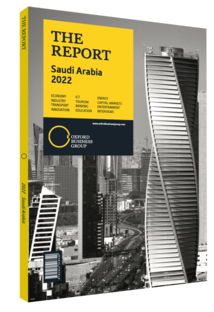Innovative practices contribute to carbon-neutral building
As the construction industry redefines its priorities to ensure sustainability, there is increasing recognition of the benefits of regenerative architecture as a means of lowering emissions. According to the “2019 Global Status Report for Buildings and Construction” published by the UN Environment Programme (UNEP), the construction sector accounts for nearly 40% of global energy-related greenhouse gas emissions. In light of this, a greater emphasis has been placed on sustainable architecture.
The principle generally seeks to minimise the negative environmental impact of buildings by using sustainable, low-emissions materials and sitespecific designs that utilise the natural environment to improve efficiency and lower costs related to areas such as lighting and heating. It challenges stakeholders to develop innovative methods to ensure that structures have minimal harmful effects on the ecosystem and community.
Emerging Markets
Cities a the developing world are expanding rapidly to keep up with high population growth. Some are meeting demand for new buildings through green construction. In 2022 Diébédo Francis Kéré, an architect from Burkina Faso, became the first African to be awarded the Pritzker Prize for his work designing sustainable buildings. By modernising traditional techniques, Kéré integrates buildings into the natural environment to improve lighting, heating and cooling effectiveness, enhancing energy efficiency. His first significant project – a single-storey schoolhouse in his home village of Gando in Burkina Faso – features a filtered light system that allows natural light in while keeping the interior cool. He has since designed schools, health centres, assembly halls and other public buildings in various countries including Benin, Mali, Togo, Kenya, Mozambique and Sudan. Kéré works in close partnership with local builders that use indigenous, low-tech construction methods and local materials.
Regenerative Architecture
There has also been discussion around the benefits of regenerative architecture in recent times. The term refers to the design of buildings that reverse damage and have a net-positive impact on the environment.
One such building is the Ilima Primary School in Tshuapa in the Democratic Republic of the Congo. Located between farmland and jungle, the school was designed to act as a bridge between the two landscapes. Comprising custom shingles, mud bricks and beams made from local materials harvested on and around the site, the school also features woven and dyed vines that grow around the building to keep the interior cool. The school’s construction emitted 307 fewer tonnes of carbon than the global average for building schools of the same size.
Net-zero Cities
Sustainable architecture is set to grow in prominence as urban planners focus on supporting net-zero targets. According to the website Net Zero Tracker, some 235 cities have pledged to meet net-zero carbon emissions goals over the medium to long term. To achieve these goals, efforts are under way to re-imagine ways in which communities can be better integrated into the natural environment.
To this end, C40 – a network of mayors from nearly 100 cities who collaborate to address climate challenges – launched the third edition of its Reinventing Cities initiative in May 2022. A dozen cities from emerging and developed economies will participate in the initiative over the course of the year, with the goal of demonstrating how municipal governments and private enterprises can collaborate on low-carbon development and community empowerment in pursuit of climate goals. Architects, urban planners, designers and developers are invited to collaborate with civic groups, non-governmental organisations, start-ups and entrepreneurs to find ways to transform and leverage underutilised urban spaces.
You have reached the limit of premium articles you can view for free.
Choose from the options below to purchase print or digital editions of our Reports. You can also purchase a website subscription giving you unlimited access to all of our Reports online for 12 months.
If you have already purchased this Report or have a website subscription, please login to continue.

